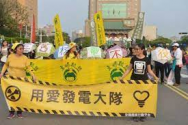I tried to find an alternating source for this info and stumbled across this Bloomberg article
And among other things it says: "ASML is investigating the possibility of increasing shipments to 90 of its EUVs in 2025, from an original target of 70 units"
Now everybody is buying / planning to buy EUV (Intel, Samsung, TSMC, Micron, etc), but by 2025 /2026 ASML will face a serious overcapacity issue because the fabs now planned will be already built, and very probably there will be a huge overcapacity in semiconductor market and semi equipment makers will feel the pain the most, as always happens: machinery manufacturers are the first to suffer a customer's market downturn because investments in new capacity are the firsts to be scrapped /delayed.
In view of this, it is strategic critical for ASML to keep the gates with China open, or it will pay a very high price after 2025-2026. I guess in ASML they have this thing very clear, and is one of the reasons why although the ultra-aggressive pressure, US have still not succeeded to force ASML banning DUV in China.

